Mourning doves, known for their gentle cooing and graceful flight, are commonly found across North America. These birds are known to build their nests in a variety of locations, from trees and shrubs to man-made structures like balconies or window ledges.
However, there are instances where mourning doves abandon their babies, leaving them vulnerable and in need of care.
Understanding why mourning doves may abandon their offspring requires examining a range of factors, including environmental conditions, parental instincts, and potential threats.
By delving into these aspects, we can gain insights into this intriguing behavior exhibited by mourning doves. So, don’t skip anything in this discussion till the end.
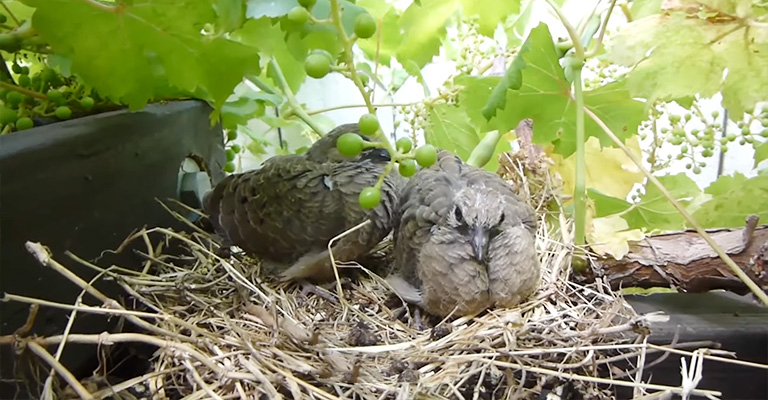
Factors That Contribute to Abandonment
Let’s first learn about the causes that mainly trigger the morning doves to abandon their babies. Here, the following factors work effectively.
Parasites as a Probable Cause
Mourning doves, like many other bird species, can be affected by various parasites that can contribute to their decision to abandon their babies. Common parasites that often infest mourning doves include the pigeon fly, mites, and feather lice.
These parasites can cause significant discomfort and irritation to the doves, making them nervous and uneasy in their nesting environment.
The pigeon fly, for instance, is a blood-feeding insect that infests birds, including mourning doves. Its bites can cause irritation and pain, leading to distress for the doves.
Additionally, blood-sucking mites and feather lice can further exacerbate the discomfort experienced by the doves.
The constant presence and activity of these parasites can make brooding doves so uncomfortable that they may choose to abandon their nest and be young.
Disturbances as a Major Reason for Abandonment
Another significant factor that can contribute to mourning doves abandoning their babies is disturbances caused by human activities and noise disruptions.
These disturbances can include activities such as lawn mowing, using power tools, or even loud conversations near the nesting area.
Mourning doves are sensitive to disturbances, and when they perceive their nest environment as being constantly disrupted or threatened, they may decide to abandon their nest and be young.
Human activities can create a state of constant stress for the doves, interrupting their brooding behavior and parental care.
The presence of a child, dogs, or other pets can also contribute to the doves’ decision to abandon their nest, as the constant movement and noise can be perceived as a potential threat to their young.
It is important to be mindful of these disturbances and minimize them to increase the chances of successful nesting and parental care by the doves.
The Nesting Behavior of Mourning Doves
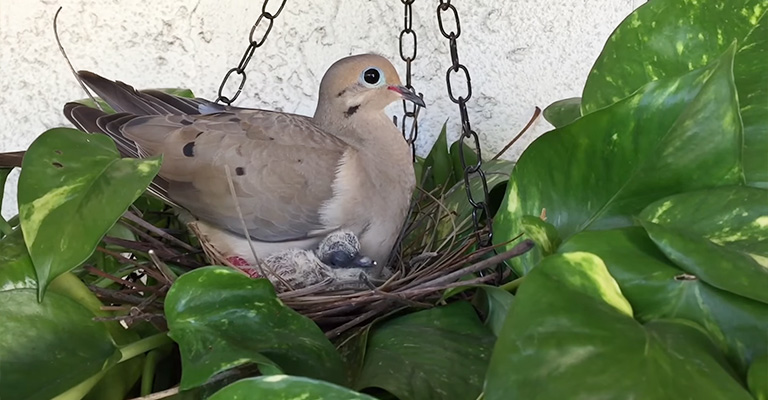
In this concept, understanding the nesting behavior of the Morning Dove is very essential. Make sure to check the details from the below sections.
Brooding Behavior and Its Importance
Brooding behavior plays a vital role in the nesting process of mourning doves. Brooding refers to the act of incubating eggs and maintaining a suitable temperature for their development.
Mourning dove parents take turns sitting on the eggs, ensuring that they are kept warm and protected. This incubation period is crucial for the eggs to hatch successfully.
During brooding, the adult doves create a cozy nest, often using materials such as twigs, grass, and leaves. The parent on duty will sit on the eggs, using their body heat to keep them at the optimal temperature.
This warmth is essential for the embryos inside the eggs to develop properly. The act of brooding helps ensure the survival of the unborn chicks.
Developmental Stages of Mourning Dove Chicks
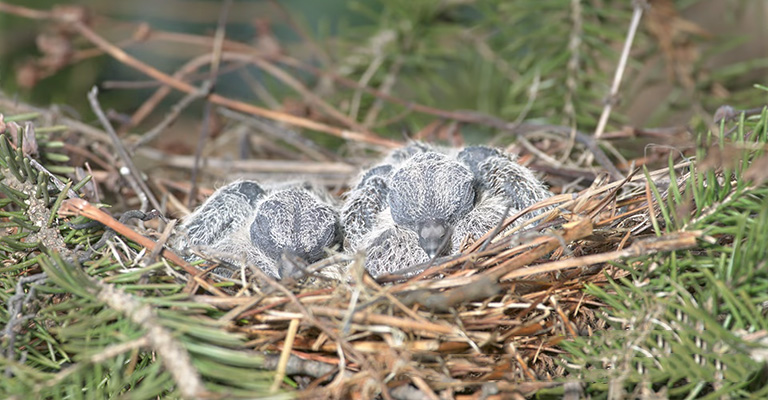
Once the eggs hatch, mourning dove chicks enter different developmental stages that require varying levels of parental care. Understanding these stages helps us comprehend the transition in parental responsibilities.
Initially, newborn mourning dove chicks are helpless and rely entirely on their parents for food, warmth, and protection.
The parents feed the chicks a specialized crop of milk, a nutritious secretion produced in their crop, which helps nourish the young and promote their growth.
As the chicks grow, they develop feathers and become more self-sufficient. The parents gradually transition from constant brooding to periodic visits to the nest.
These visits are focused on feeding the chicks and providing them with the necessary nutrition. The parents may spend less time in the nest and may even leave the chicks unattended for short periods as they gain independence.
During this transition, the chicks become more mobile and start to explore the immediate surroundings of the nest. They may flap their wings and exercise their flight muscles in preparation for their first flight.
The parents continue to monitor and protect their young during this stage but gradually encourage their independence.
Temporary Abandonment Versus Permanent Abandonment
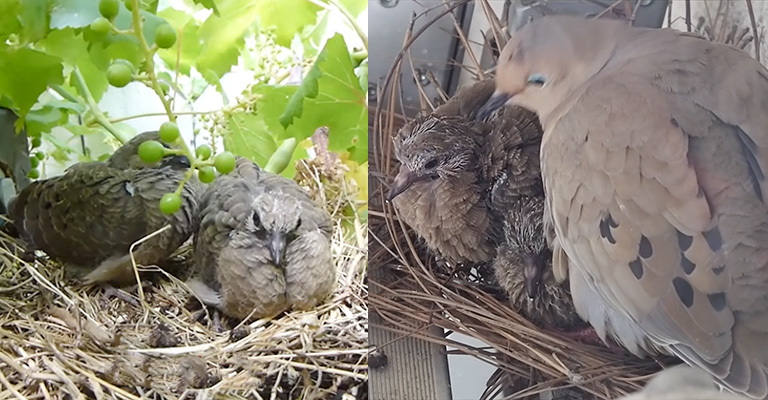
Not all doves abandon their babies permanently. Some simply go for temporary abandonment. Here’s how this process works in general.
Reasons for Temporary Abandonment
Temporary abandonment by mourning doves is often a natural part of the nesting process as chicks become more independent. As the chicks grow, develop feathers, and gain strength, they require less constant brooding and parental care.
The parents may start to spend less time in the nest and leave the chicks unattended for short periods. This behavior allows the young doves to develop important skills, such as self-regulating their body temperature and exercising their wings in preparation for flight.
Temperature regulation is one of the reasons for temporary abandonment. Once the chicks develop feathers, they can better regulate their body heat and stay warm even when the parents are not constantly brooding them.
The parents may leave the nest to engage in other activities such as foraging for food or preening, while periodically returning to feed and check on the chicks.
Signs of Permanent Abandonment
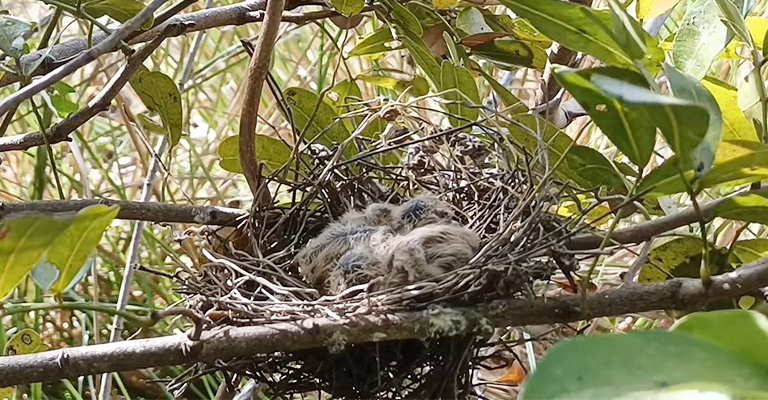
While temporary absences are normal, there are signs that indicate permanent abandonment by mourning doves. The extended absence of the parents is a significant indicator of potential permanent abandonment.
If the parents do not return to the nest for an extended period, it could suggest that they have abandoned their chicks and will not be resuming their parental responsibilities.
Another sign of permanent abandonment is the lack of feeding or parental care. If the chicks are left unattended for prolonged periods without receiving food or any form of parental care, it is a cause for concern.
The absence of the parents coupled with the deterioration of the chicks’ health and well-being may indicate that they have been permanently abandoned.
Minimizing Abandonment Risks and Providing Support
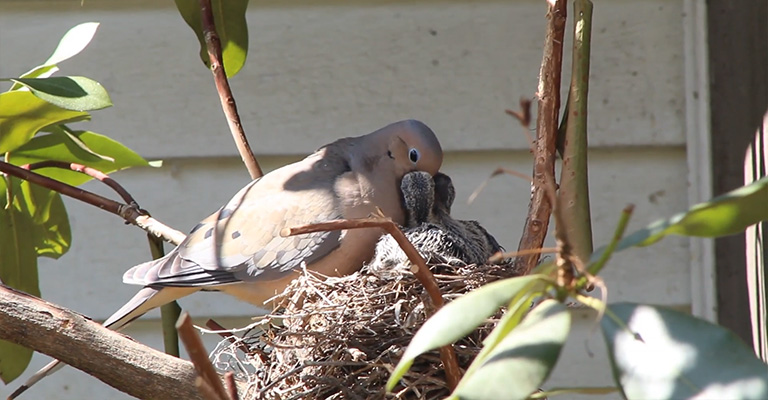
Now, the question is how can we help those poor morning dove babies that motivate their mothers to keep the babies? Well, there are some ways that truly work. Make sure to follow the below points.
Creating a Suitable Nesting Environment
One way to minimize abandonment risks is to create a suitable nesting environment for mourning doves. This includes selecting nesting locations that are away from disturbances.
Choose areas that are relatively quiet and peaceful, avoiding high-traffic or noisy areas of your property. Providing nesting sites that are sheltered from strong winds and direct sunlight can also contribute to the comfort and security of the nesting doves.
Additionally, taking steps to protect the nesting area from potential predators is crucial. Consider installing barriers or predator guards around the nesting site, such as mesh or netting, to deter predators like cats or squirrels.
By creating a safe and secure nesting environment, you can help reduce the likelihood of disturbances and predation.
Promoting a Calm and Quiet Atmosphere
Minimizing human disruptions and maintaining a calm and quiet atmosphere around the nesting site is essential for supporting the nesting mourning doves.
Offer tips to family members or neighbors on how to minimize noise and disturbances near the nest. This can include avoiding loud conversations, refraining from using power tools or machinery nearby, and keeping pets away from the nesting area.
Being mindful of noise levels during activities such as lawn mowing or construction is also important. If possible, schedule these activities at times when the doves are less likely to be disturbed, such as early morning or late evening when they are typically less active.
Seeking Professional Help and Intervention
In situations where abandonment has occurred or there are concerns about the welfare of the chicks, seeking professional help from wildlife rehabilitators or avian experts is crucial.
These professionals have the expertise and resources to provide appropriate care for abandoned young doves if necessary.
Contact local wildlife rehabilitation centers or bird rescue organizations to report the situation and seek guidance. They can provide advice on how to care for abandoned chicks or may offer to take them in for proper rehabilitation.
It’s important to ensure that abandoned young are placed in the hands of professionals who can provide the specialized care they need for their survival.
Factors Influencing Mourning Dove Nest Abandonment
| Factors | Description |
| Parasites | Common parasites affecting mourning doves (e.g., pigeon fly, mites, feather lice) |
| Disturbances | Human activities and noise disruptions near the nesting area |
| Developmental Changes | Transition in parental care as chicks grow and become more independent |
| Temperature Regulation | Role of temperature regulation in temporary abandonment during chick development |
| Feather Development | Impact of feather development on the need for constant brooding |
| Extended Absence of Parents | Prolonged absence of parents from the nest, indicating potential permanent abandonment |
| Lack of Feeding or Parental Care | Failure to provide food or parental care to the chicks, suggests potential abandonment |
| Suitable Nesting Environment | Importance of selecting nesting locations away from disturbances and ensuring predator safety |
| Calm and Quiet Atmosphere | Tips for minimizing human disruptions and noise near nests |
| Professional Help and Intervention | Contacting wildlife rehabilitators or avian expert |
FAQs
Nest abandonment can occur in mourning doves, but the frequency varies depending on several factors such as the presence of parasites, disturbances, and the overall nesting environment.
With appropriate nesting conditions and minimal disruptions, the likelihood of abandonment can be reduced.
Parasites, such as pigeon flies, mites, and feather lice, can make brooding doves uncomfortable and nervous. While parasites can contribute to nest abandonment, they are often coupled with other factors, such as disturbances, which collectively impact the doves’ decision to abandon their young.
If you suspect nest abandonment, it’s important to observe the nest for an extended period to confirm the absence of parental care. If you believe the chicks are at risk, consider contacting local wildlife rehabilitators or avian experts for guidance and assistance.
Yes, mourning dove parents may temporarily leave the nest as the chicks become more independent. They may return periodically to feed and check on the young.
It’s important to allow time for the parents to resume their care before assuming permanent abandonment.
Wrapping Up
The abandonment of their offspring by mourning doves is a complex behavior influenced by several factors. Environmental conditions, such as disturbances near the nest or an unsuitable habitat, can disrupt the birds’ ability to care for their young.
Parental instincts may also play a role, as inexperienced or stressed individuals may be more likely to abandon their offspring. Additionally, threats from predators or human interference can further contribute to this behavior.
However, I think you’ve got my points. Still, if you have anything to ask please go on. Thank you in advance for your support.